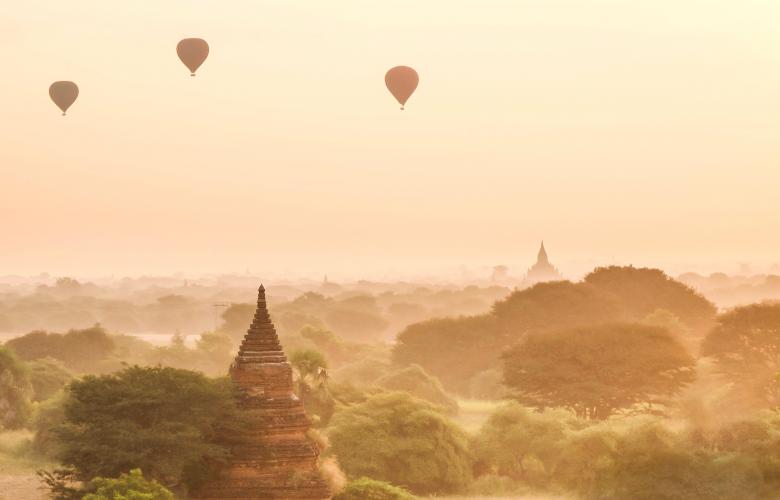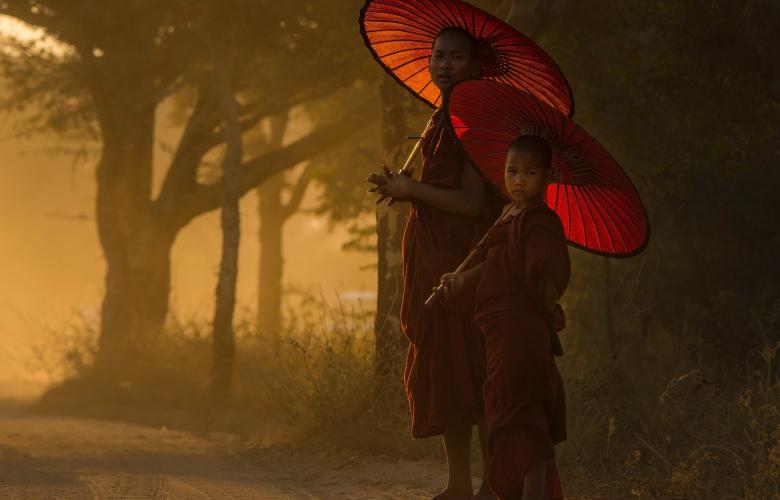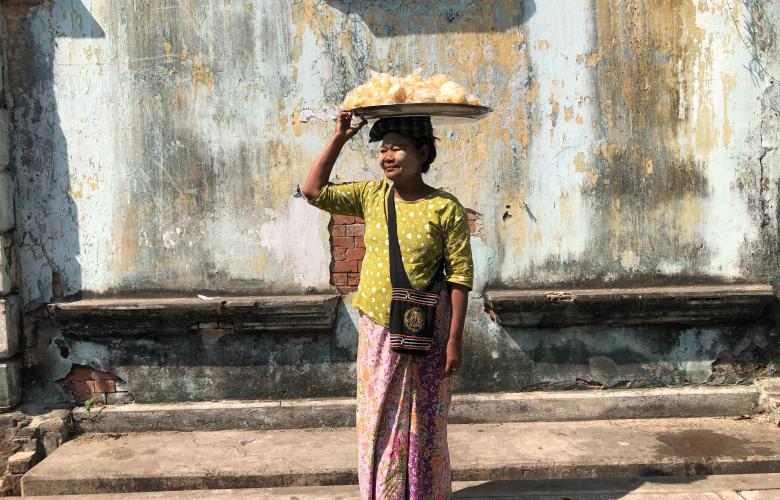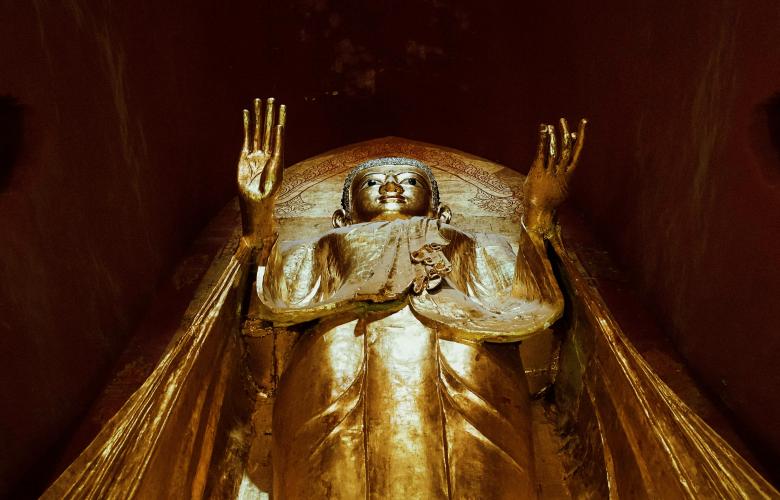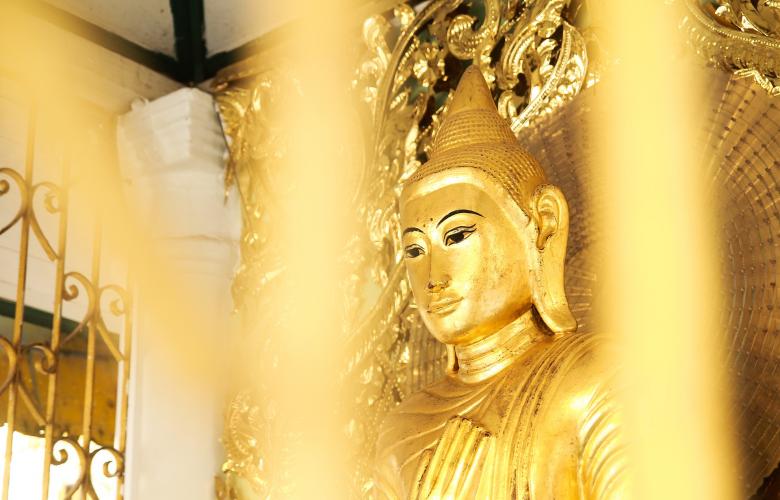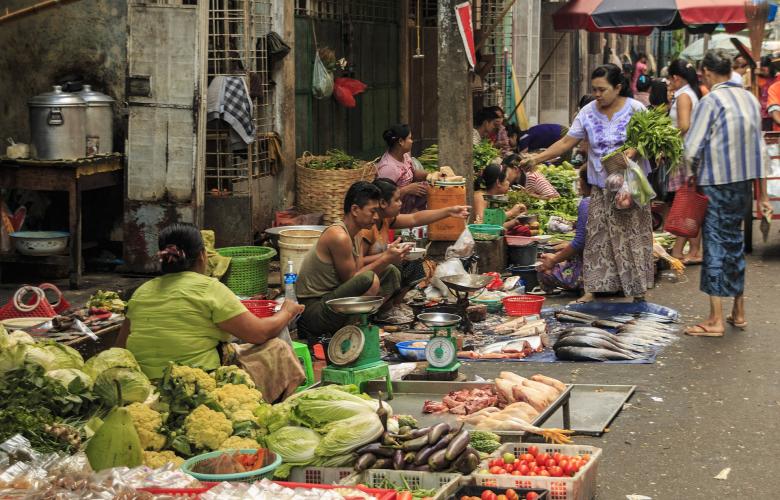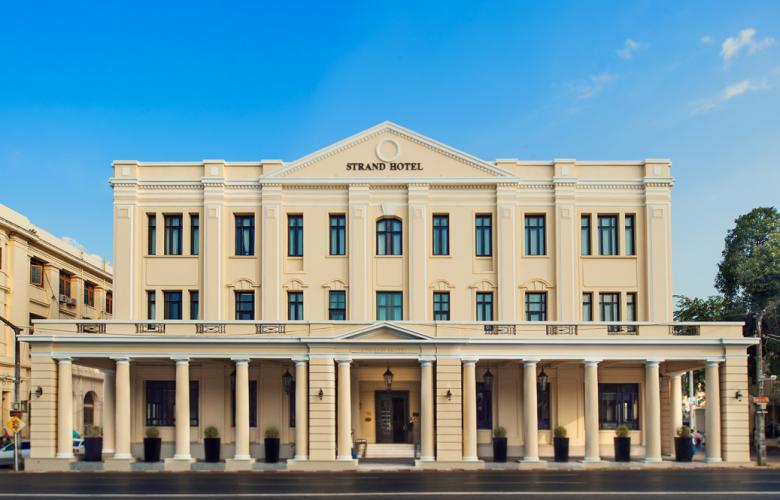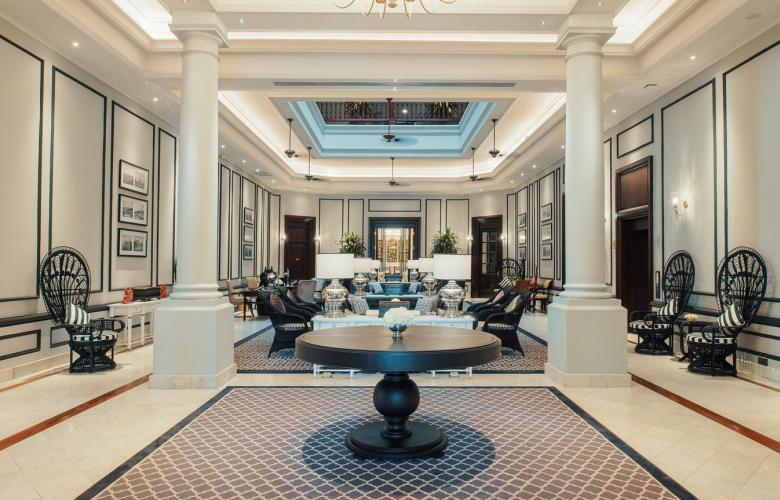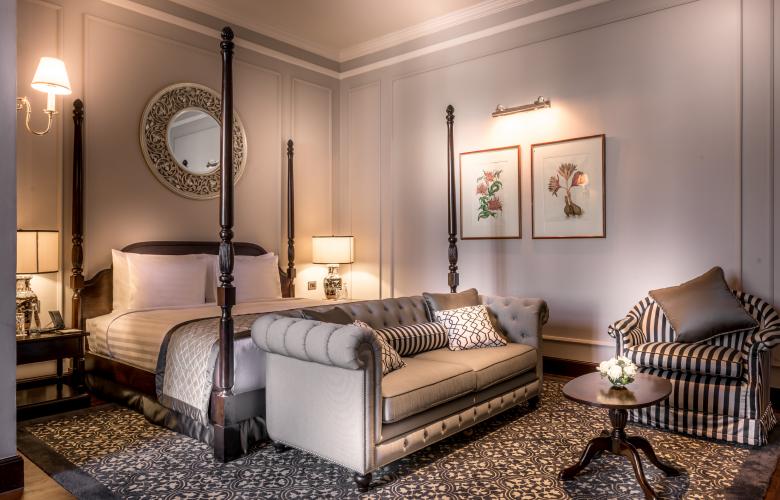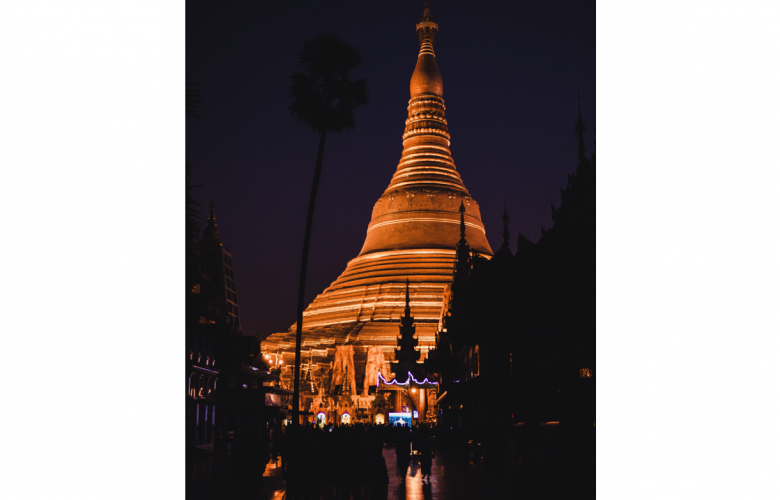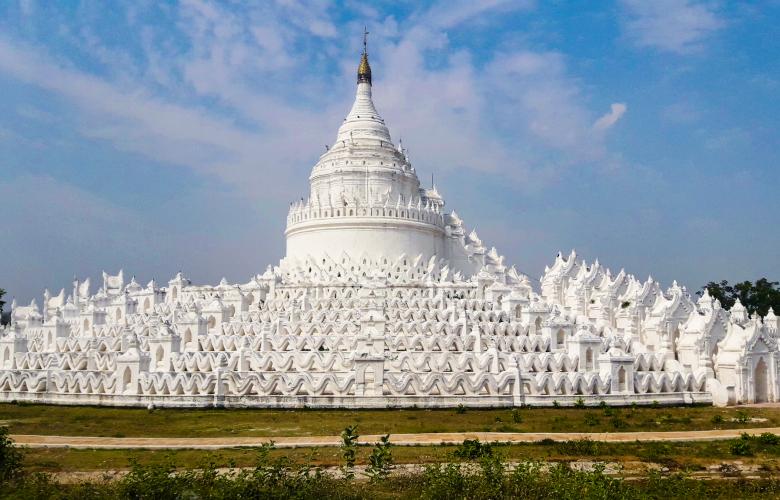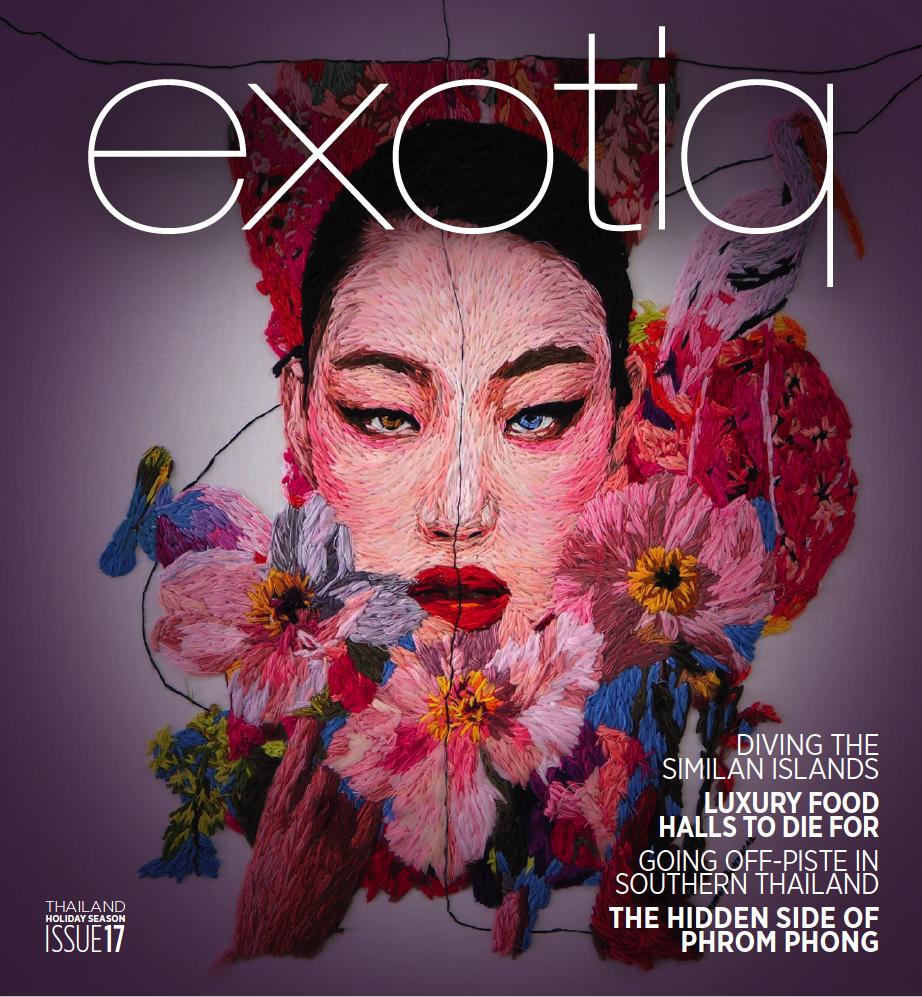“Then, a golden mystery upheaved itself on the horizon, a beautiful winking wonder that blazed in the sun, of a shape that was neither Muslim dome nor Hindu temple-spire…The golden dome said, ‘This is Burma, and it will be quite unlike any land that one knows about.’ ” – Rudyard Kipling, Letters from the East.
One hundred and thirty years after Kipling commented on Myanmar’s appeal, the Land of Golden Pagodas continues to take hold of travellers’ curiosity. The mesmerising, and often misunderstood, country is a mix of extreme contradictions.
Picturesque golden pagodas do indeed dot the land housing crimson-robed Buddhist monks while local men still wear the traditional sarong-like longyi and women smear their faces in thanakha. A rich spirituality rooted in Myanmar’s own blend of Buddhist and animist beliefs continues to thrive, and the country’s cuisine offers travellers exotic tastes and textures with unique ingredients like fermented tea leaves. Yet, the old military guard still maintains a tight grip on Myanmar despite the country holding its first democratic election in decades in 2010. Global commerce and tourism opened up almost overnight in 2013 with companies and travellers flocking to the country before it became “too globalised” or commercialised. While things have certainly changed in the name of progress – WiFi is now more widespread in cities as are ATMs and the rules for using crisp, brand-new U.S. dollar bills have softened – in recent years Myanmar has stormed onto the international scene again, this time with renewed stories of corruption, oppression and military crackdowns. Main tourist destinations, such as Yangon, Bagan, Mandalay and Inle Lake, have remained largely unaffected, but many remote areas of the country are still strictly off limits to foreigners.
Overall tourist levels managed to increase slightly in 2018 but significantly dropped from Western countries resulting in anyone connected to the hospitality industry feeling the pinch. Opting to not travel to Myanmar, affects the nation’s citizens rather than its government and further isolates a country and people that want their story known.
The only way to scratch the surface of Myanmar’s unique allure is to experience the country for oneself.

YANGON
To begin one’s journey, it’s best to dive right into its largest and most significant city – Yangon. Formerly known as Rangoon, the hectic hub is the country’s centre of commerce, culture and growth. New buildings, restaurants, bars, hotels, shops and galleries thrive next to the city’s established markets, street food stalls and spiritual sites. The awe-inspiring Shwedagon Pagoda continues to be Yangon’s biggest draw, both for domestic and international visitors. Covered with 25 metric tonnes of gold leaf and even adorned with diamonds and gemstones, the glittering pagoda is one of Buddhism’s most revered sites. Nearby, Kandawgyi Lake offers a place to stroll, exercise, dine and admire the Shwedagon Pagoda reflected in its waters. Back in the bustle, Bogyoke Aung San Market (akin to Bangkok’s Chatuchak Market) boasts around 2,000 stalls. Housed in an imposing British colonial building, the sprawling bazaar is the place to go for antiques, textiles and handicrafts, as well as cheap souvenirs.
Another heritage building, and where one should base their travels, is The Strand Hotel. A city landmark since being established in 1901 by Aviet and Tigran Sarkies, the famous hoteliers behind the iconic Raffles Hotel in Singapore and the Eastern & Oriental in Penang, the grand dame originally welcomed the likes of Kipling, George Orwell and Somerset Maugham, and was named, “The finest hostelry east of Suez,” by British author John Murray in his 1911 Handbook for Travellers in India, Burma and Ceylon.
In 2016, The Strand Yangon entered a new era of hospitality, reopening after a six-month restoration project in which local artisans meticulously restored each original architectural detail, from the teak panelling to traditional Myanmar lacquerware, whilst creating a relaxed, glamorous setting for 21st century travellers. Airy rooms and suites envelop travellers in soft hues and subtle luxury while guests also benefit from The Strand’s flawless service; suites are attended 24 hours a day by highly trained butlers.
Outside of the rooms, the hotel’s teak wood-panelled bar, now renamed to Sarkies Bar in honour of its founders, still serves as a social epicentre with its traditional Strand Sour cocktail and an extensive wine, beer and single malt whiskey collection.
When it’s time to bid Yangon and The Strand adieu, journey north to the ancient plains of Bagan.

BAGAN AND BEYOND
One cannot travel to the golden land without setting sight on Bagan. Thousands of sacred stupas rise from the rustcoloured dusty plains, relics of a time between the early 1000s to late 1200s when Bagan’s kings built more than 4,000 Buddhist temples to accrue good karma for their next lives. As one of the world’s greatest archeological sites, the mesmerising, otherworldly setting just begs to be explored.
But where to begin?
Moored at an exclusive spot right by Old Bagan, The Strand Cruise matches its sister hotel in elegant style and service all with an added dash of adventure. The custombuilt, 25-cabin vessel takes inspiration from the Ayeyarwady River meandering, ever-changing landscapes while reinventing The Strand Hotel’s legendary experience into a contemporary river cruise. Luscious en-suite cabins boast floor-to ceiling Juliet balconies with opening windows and 24-hour butler service.
The luxury vessel’s four-night cruise from Bagan to Mandalay begins with breakfast in Bagan’s oldest lacquerware house before guests discover the gold-plated Shwezigon Pagoda and the iconic Ananda Temple with the help of The Strand’s insightful guides. After lunch, passengers continue their exploration of Bagan before a leisurely evening in preparation for the next day’s journey.
On day two, passengers enjoy cruising upstream passing rural landscapes and making the most of life on board – from sipping classic Strand cocktails in the lounge bar to afternoon tea on deck. The á la carte Strand Restaurant offers all-day dining featuring expertly created cuisine influenced by the region, along with an international menu items and signature dishes from The Strand Hotel. Late mornings and evenings are meant for lounging on the sundeck with its horizon-level pool, while guests can hide from the heat of the afternoon in the Strand Spa or fit in a workout session at the onboard gym.
On the third morning, the cruise moors at Ava, another ancient imperial capital from the 14th-19th centuries, where horse carts wait to carry guests through the untouched landscape and landmarks.
Fortunately, arriving in the former royal city of Mandalay the following day doesn’t mean the journey is over just yet.

THE ROAD TO MANDALAY
Inspiring Rudyard Kiping’s famous poem Mandalay and then some 30 book titles, songs and more, today Mandalay doesn’t quite live up to its historic grandeur. The hub of upper Myanmar still attracts visitors with a quiet charm, however.
Founded in 1857, Mandalay proved to be the last royal capital of the Konbaung Dynasty as the British seized the city in 1885, sending the king and queen into exile, taking control of the country and ending the Third Anglo- Burmese War. Bombs levelled the city during World War II, reducing it even further. A new Mandalay Palace, rebuilt in the 1990s, serves as the centre of the city and a common tourist site while the 240-metre-high Mandalay Hill overlooks the city.
From The Strand Cruise, passengers first stop at one of the country’s most iconic sites, the wooden U Bein Bridge spanning Taung Tha Man Lake, which is believed to be the oldest and, at one time, longest wooden bridge in the world. From there, they visit the Mahamui Buddha Temple followed by lunch back on board as the cruise continues to Mingun, just north of Mandalay to marvel at the small village’s massive unfinished pagoda as all-white Hsinbyume Pagoda. The final night is spent at an exclusive mooring overnight close to a temple in Ava where guests say goodbye to fellow passengers with a celebratory dinner.
A grand farewell for a grand journey.
Superior Suites at The Strand Hotel from 288 USD.
TO ENJOY A 15% DISCOUNT ON HOTEL OR CRUISE PRICES, BOOK DIRECT AND QUOTE CODE "GLAM" AT: hotelthestrand.com

ALL ABOARD THE STRAND CRUISE
The Strand Cruise operates a regular schedule of two-, three- and four-night sailings between Bagan and Mandalay, departing Mondays from Bagan on the four-night journey to Mandalay, and every Friday for the two- or three-night journey from Mandalay to Bagan. The second half of the 2019 sailing season recommences on 30 September until the beginning of May 2020.
Starting rates for a three-night journey on The Strand Cruise are from 900 USD per person based on double occupancy and include all suite cabin accommodation, full board, excursions, activities, English-speaking guides (with alternative languages available upon request with an added fee) and more.
FOR MORE CONTACT: thestrandcruise.com
ONWARD TO INLE
Myanmar’s other primary tourist draw is the mystical Inle Lake. Situated slightly southeast from the centre of the country, the 116-squarekilometre lake serves as a unique cultural and ecological hub, home to the native Intha people and a surprising number of endemic species. Due to its ecological importance, the region is marked as a UNESCO Biosphere Reserve. It’s also captivatingly beautiful. Calm waters reflect clear blue skies and serve as waterways for the area’s 70,000 people who zip across the surface in long and low-sitting wooden boats.
A journey to Inle isn’t complete without spending a couple of days exploring the significant religious sites, including Phaung Daw Oo Paya, the holiest site in southern Shan State, and the crumbling pagodas of Indein village, as well as a number of cottage industries, including lotus silk weaving and silversmithing, and local fresh markets held in different spots around the lake each day.

